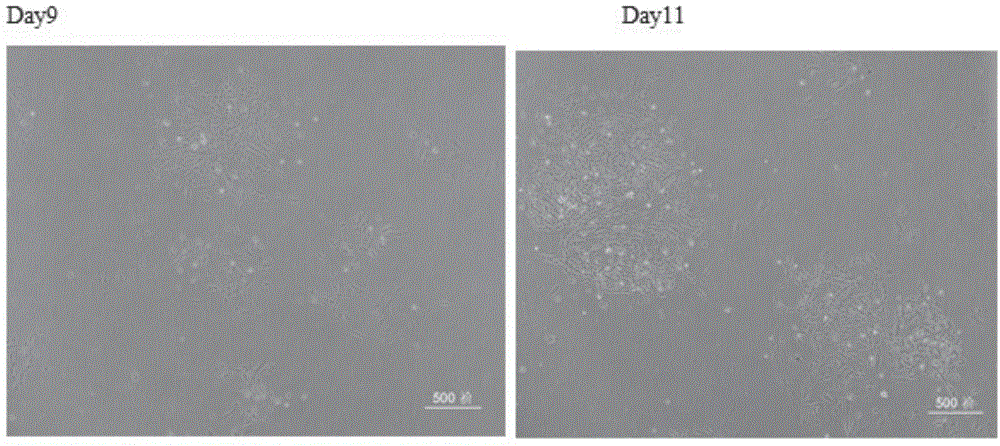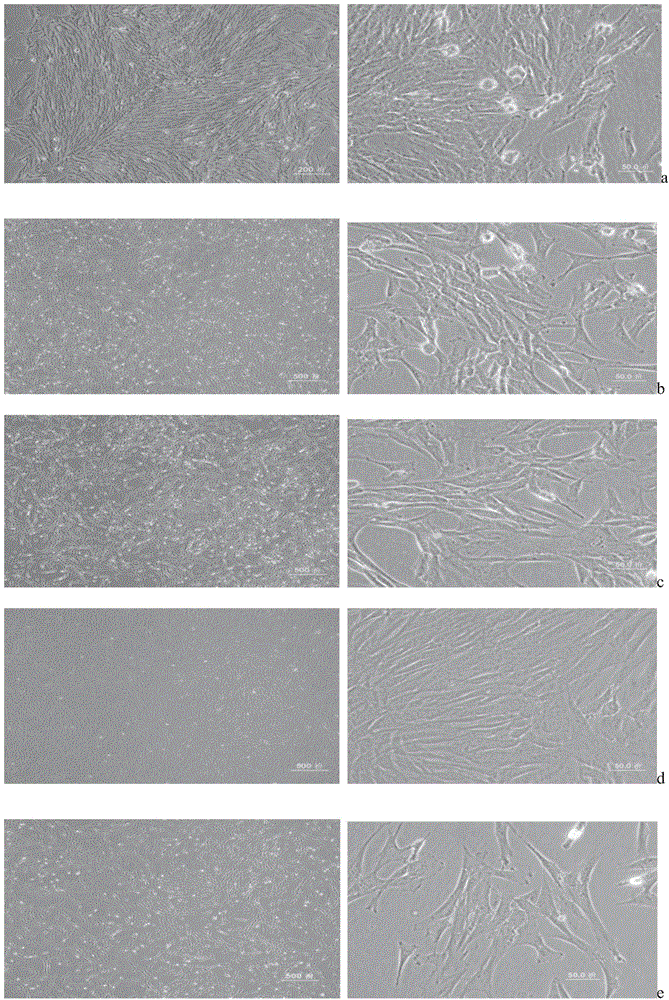In-vitro separation and cultivation method for tooth-sourced mesenchymal stem cells
A technology of mesenchymal stem cells and culture methods, applied in the field of in vitro isolation and culture of tooth-derived mesenchymal stem cells, can solve problems such as insufficient knowledge of stem cells, and achieve the effect of maintaining cell uniformity, maintaining cell stemness, and good cell uniformity
- Summary
- Abstract
- Description
- Claims
- Application Information
AI Technical Summary
Problems solved by technology
Method used
Image
Examples
Embodiment 1
[0034] Example 1 Preparation of tooth-derived mesenchymal stem cell culture medium.
[0035] The mononuclear cell culture fluid provided by the present invention includes basic culture fluid and newborn fetal bovine serum, specifically: α-MEM basic culture+10% newborn fetal bovine serum+L-ascorbic acid-2-phosphate sodium+L-glutamine + Penicillin / Streptomycin.
Embodiment 2
[0036] Example 2 Isolation and culture of tooth-derived mesenchymal stem cells.
[0037] Specific steps for the isolation and culture of dental-derived mesenchymal stem cells:
[0038] 1]. Tooth preservation solution: sterile saline, stored at 4 degrees for no more than 48 hours.
[0039] 2]. Specimen transportation and pretreatment: Scrape off the gums and surrounding tissues on the surface of the teeth, and then use iodine and 75% alcohol to clean the surface of the teeth in order to prevent the contamination of oral bacteria. Then wash with normal saline 5 times to remove iodine and alcohol.
[0040] 3]. Isolation and culture of cells: Wrap the tooth with sterilized gauze, place the pulp cavity towards the middle, place it in a vise, and gently crush the tooth to expose the pulp. The culture medium was added to the centrifuge tube, and the dental pulp was collected into the centrifuge tube with sterile tweezers, and then cut into pieces with scissors. Add 3 mg / mL type Ⅰ ...
Embodiment 3
[0045]Example 3 CFU-F assay of tooth-derived mesenchymal stem cells.
[0046] Primary CFU-F analysis: with 2 x 10 5 / cm 2 Dental pulp cells were planted in 3 wells of a six-well plate, culture medium was added, cultured in a standard incubator, and the medium was changed for 48 hours; the medium was changed every 3-4 days thereafter. When the adherent cells form more than 50 cell clones (about 7-11 days), count CFU-F under a microscope, or stain with toluidine blue to count the number of CFU-F. The average value of 3 wells is the number of CFU-F. Remarks: Due to the low yield of dental pulp cells, primary CFU-F analysis was not performed.
[0047] CFU-F analysis of passaged cells (dental pulp DPSCs): 100 cells were planted in 3 wells of a six-well plate, culture medium was added, cultured in a standard incubator, and the medium was changed every 3-4 days. After culturing for 10 days, count CFU-F under a microscope, or stain with toluidine blue to count the number of CFU-F...
PUM
 Login to View More
Login to View More Abstract
Description
Claims
Application Information
 Login to View More
Login to View More - R&D
- Intellectual Property
- Life Sciences
- Materials
- Tech Scout
- Unparalleled Data Quality
- Higher Quality Content
- 60% Fewer Hallucinations
Browse by: Latest US Patents, China's latest patents, Technical Efficacy Thesaurus, Application Domain, Technology Topic, Popular Technical Reports.
© 2025 PatSnap. All rights reserved.Legal|Privacy policy|Modern Slavery Act Transparency Statement|Sitemap|About US| Contact US: help@patsnap.com



